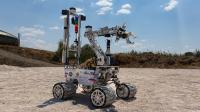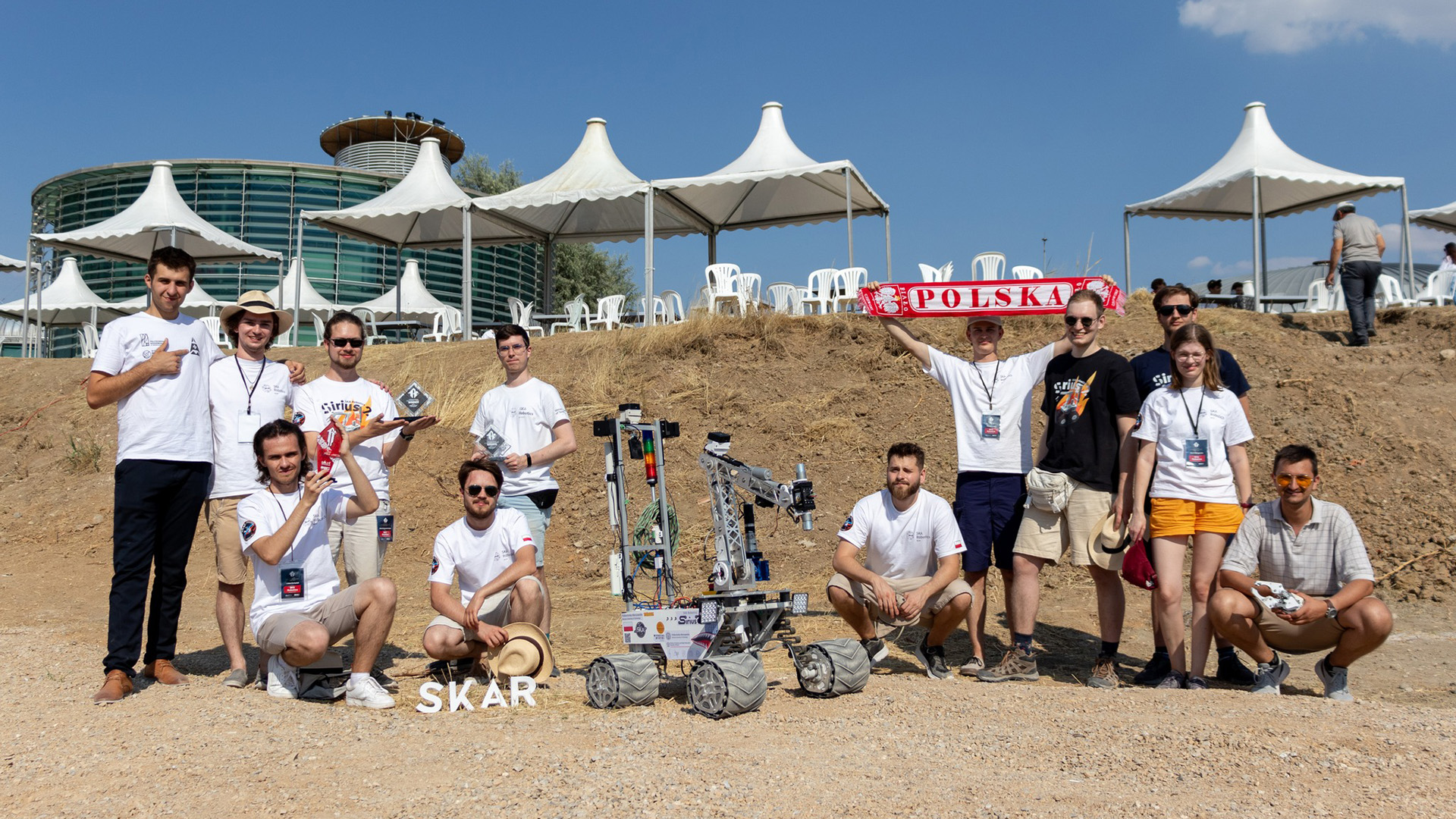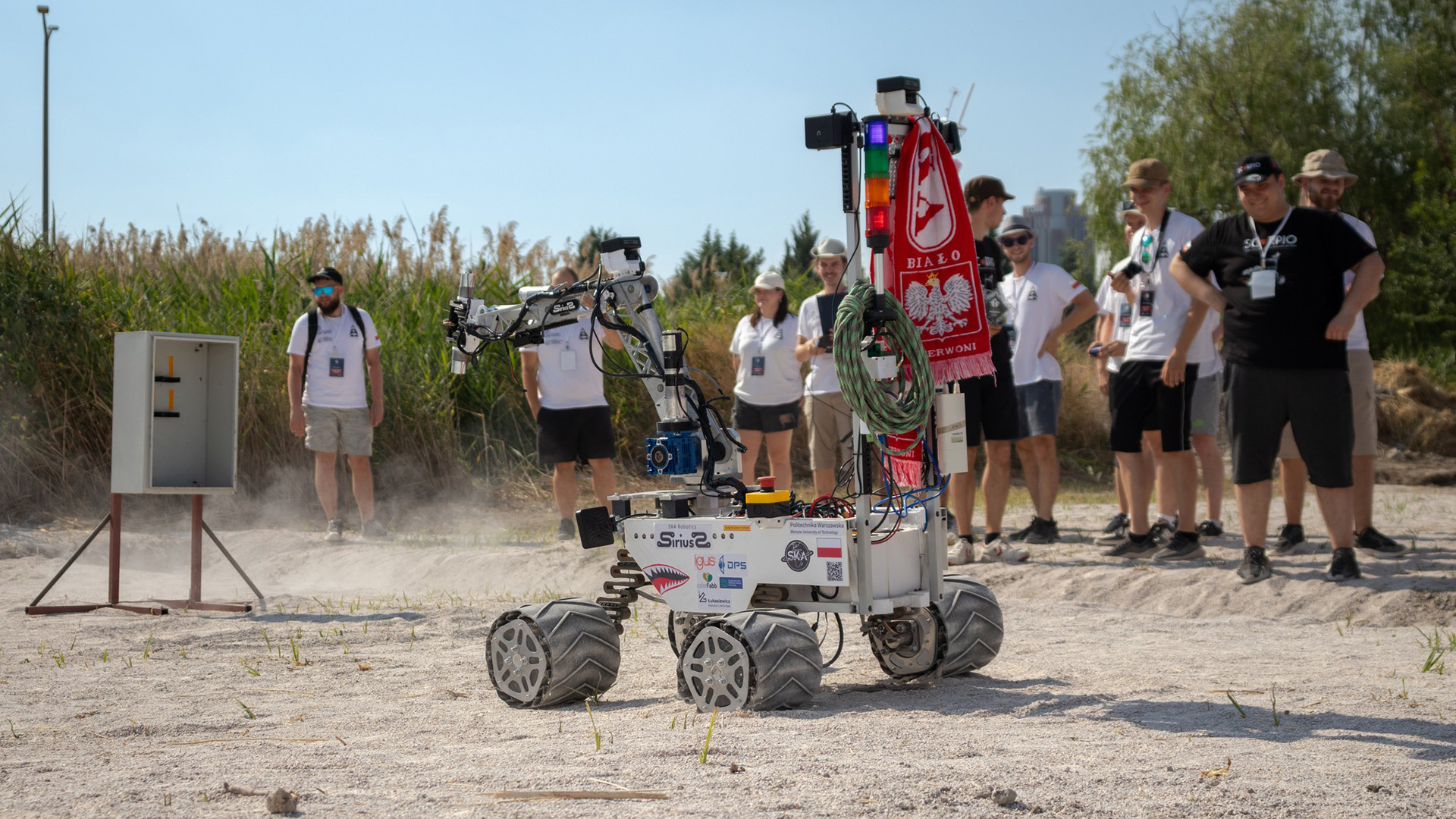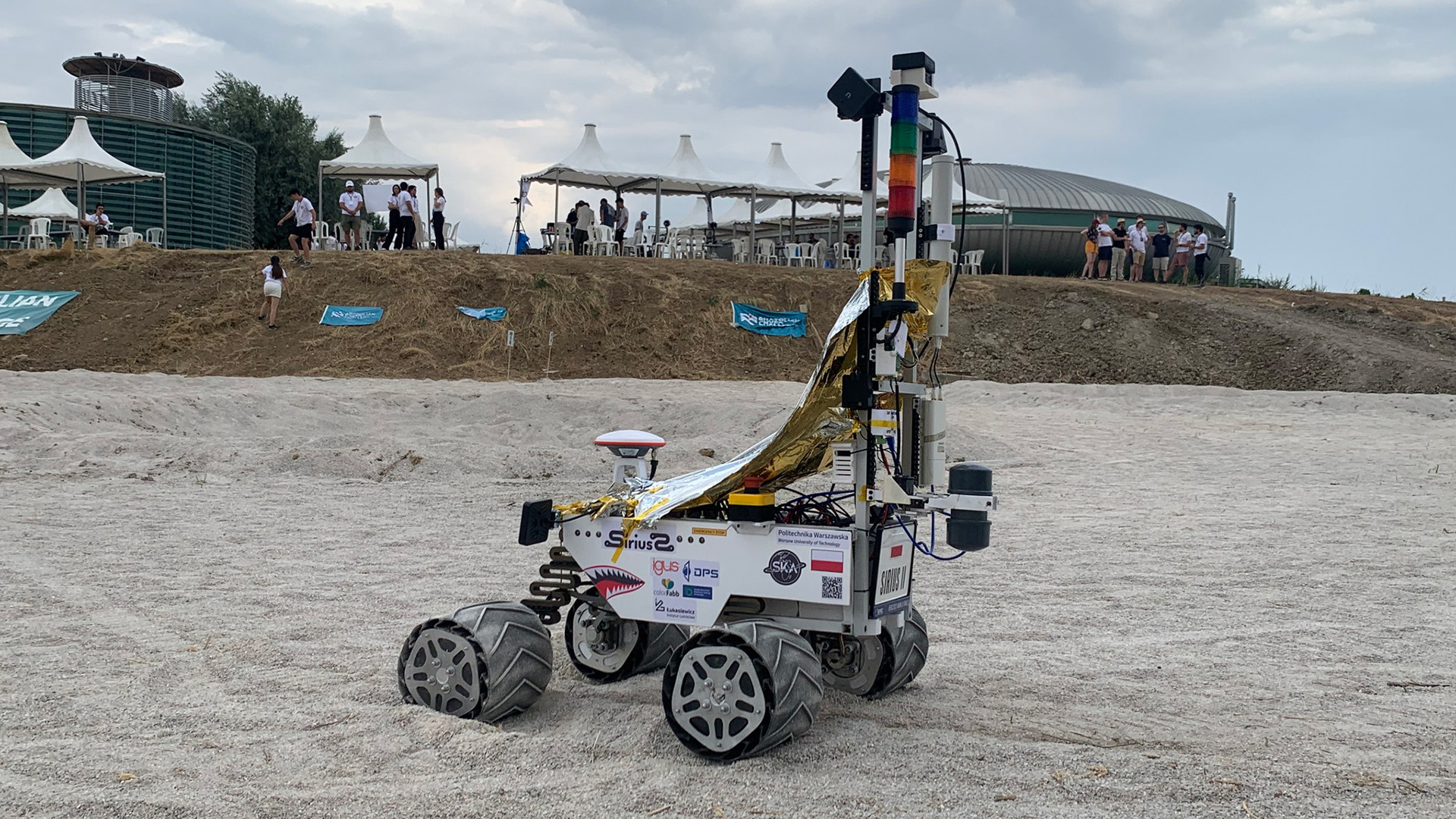Our engineers among the winners of the Anatolian Rover Challenge
The team of SKA Robotics representing the Warsaw University of Technology took the third place in the general classification of the competition Anatolian Rover Challenge. Our team also won three special awards for: best system of autonomous navigation, best solution in the category driving in rough terrain, and best sampling module. Leader of the team SKA Robotics is Miłosz Kurtysiak – Coordinator of the Robotics Section.
In the international competition, from the SKA Robotics Students’ Research Group participated twelve persons from five WUT faculties: Faculty of Power and Aeronautical Engineering, of Automotive and Construction Machinery Engineering, of Mechatronics, of Electrical Engineering and of Electronics and Information Technology, as well as from the Faculty of Physics of the Warsaw University. The whole team took part in all competitions, and in the particular tasks participated people who are more specialized or are working on a given task.
- The competition final consisted of two parts: main competitions and the so-called "challenge to shine", in which the jurors talked with us about various systems of our rover and awarded additional prizes for them. During the main part of the competition, lasting 3 days, we faced four missions taking place on Mars and on the moon – says Miłosz Kurtysiak, coordinator of SKA Robotics.
Competition missions out of this world
The aim of the Science mission was to collect a sample of the ground and verify a scientific hypothesis made earlier. Thanks to a special module mounted on the rover, the team successfully drilled the ground and obtained a sample, which automatically was put in a special box. Thanks to sensors, they also obtained the measurements of soil moisture and temperature. Then chemical experiments were conducted to verify the hypothesis on water content in the past.
The WUT rover also faced the challenges that had given its creators sleepless nights for many years. It was Autonomous Mission, in which the robot must operate autonomously without any intervention of the operators. An additional challenge was the requirement of compatibility with a special protocol provided by the organisers. Despite that, Sirius perfectly went through the obstacles of the Moon Yard, delivered the cargo to the right place and then reached the tunnel. It is a real breakthrough for our team.
The third mission was an interesting challenge for the manipulator. Unfortunately, when the carriage was being drawn, the manipulator was damaged and despite an intervention and attempt at repairing it, the team failed to complete the mission. In turn, the night mission went very well – Sirius had been equipped with special lights that allowed observation of Mars at night. Our operator managed to switch the additional lights on and take photos and gain information about a rocket that landed on Mars.
Special competitions
The WUT team was the best in special competitions: best autonomous navigation system, best solution in the category driving in rough terrain and best sampling module. No other team got so many awards in so many categories.
- The category of best autonomous navigation system evaluated the system thanks to which the rover moves without any intervention of the operator and avoids the obstacles in its way. The jury was impressed how advanced the system was. We used the SLAM solution (simultaneous localization and mapping) to locate the robot and to build a map of terrain height in real time using a Luxonis depth camera. In the category best solution for driving in rough terrain our rover surprised the jury with its resistance and the fact that it can even take a passenger. An award for the best sampling module was not foreseen by the jury but our drilling and sampling system interested the judges so much that they created an additional category – reports Miłosz Kurtysiak.
Each category was judged by another group of jurors specialising in the field. Additional awards were given for team management, autonomous system, driving in rough terrain, manipulator operation, materials selection for the rover, scientific experiment planning and sampling module.
Challenges on top of the competition
If there are no technical problems or challenges, there is no real competition – the participants say.
- We were most surprised by the Turkish sun. It overexposed the image from cameras and overheated the computer. Fortunately, covering it with NRC foil significantly lowered the temperature of operation and allowed us to participate in the competition successfully. Another surprise was the weight of the carriage which we had to move during the third mission. When we tried to move it, we broke the manipulator gripper, which stopped us from further participation in the mission – says Miłosz Kurtysiak.
The greatest challenge was getting to the competition. Due to high costs and problems connected with air travel, the rover had to be transported by car. Therefore, 4 team members had to go on an epic journey through Slovakia, Hungary, Romania, Bulgaria and get to Ankara, the capital of Turkey, where the competition was held. In three days they covered over 2,500 km. Apart from that, during the competition, most competitors suffered from an illness similar to stomach flu and four team members even had to go to hospital. – In spite of that, we did not give up and those who were healthy competed on the Mars Yard – adds Miłosz Kurtysiak.












